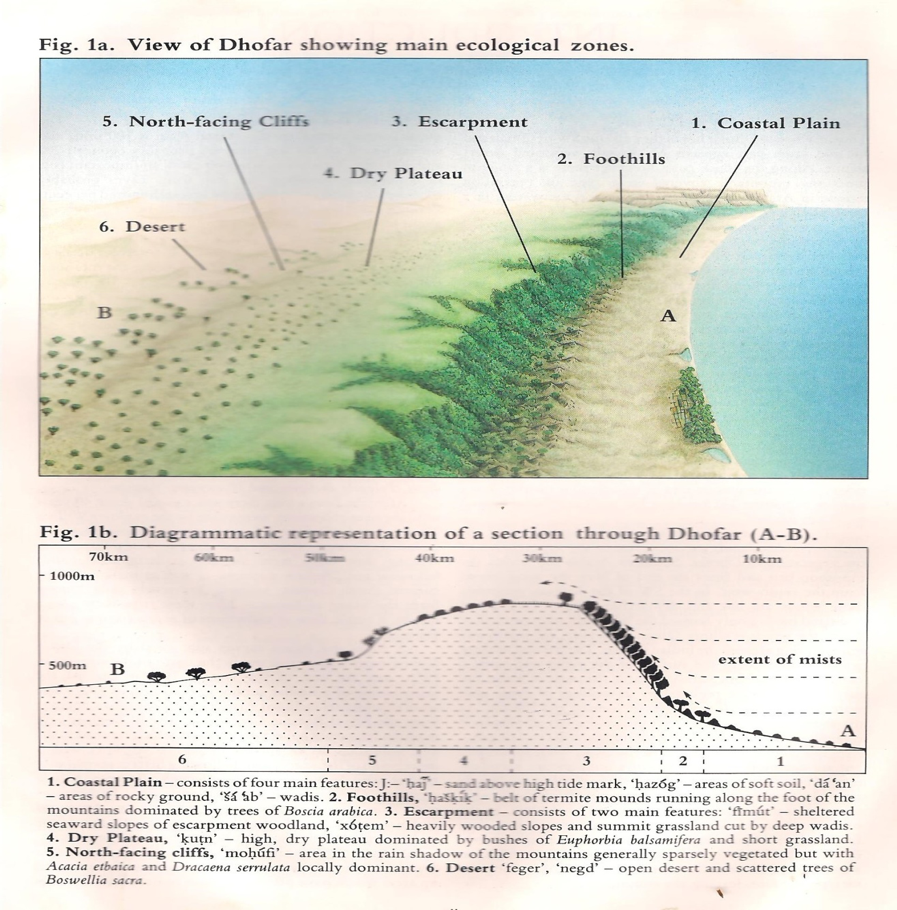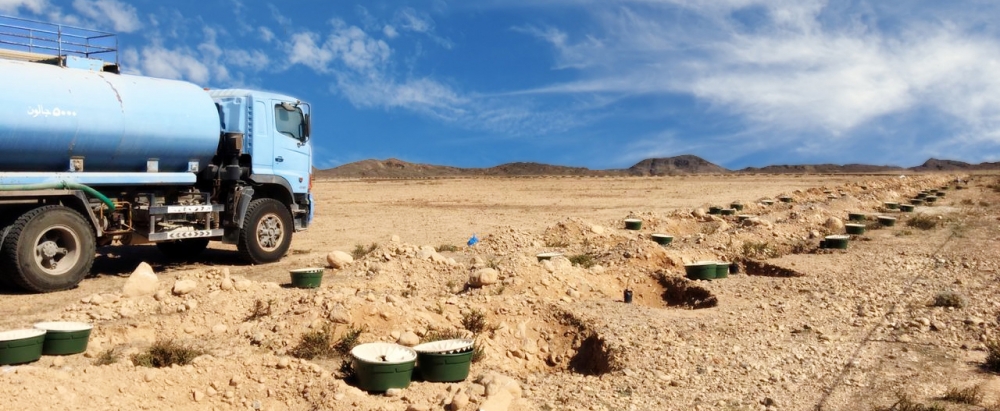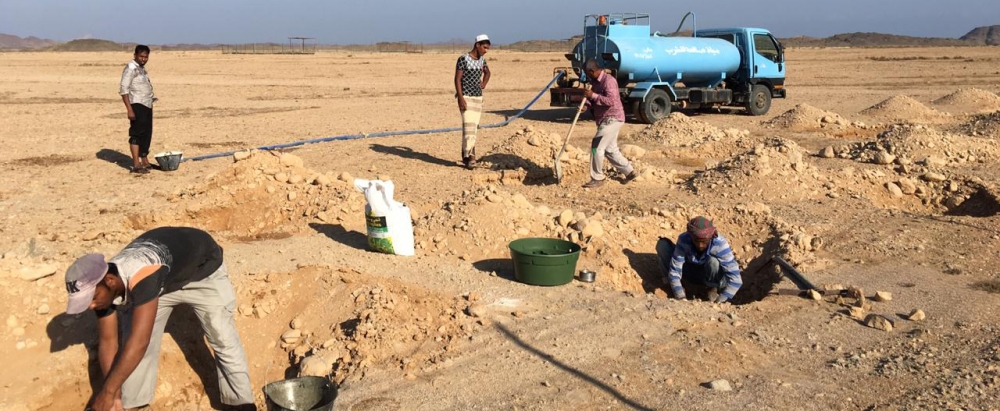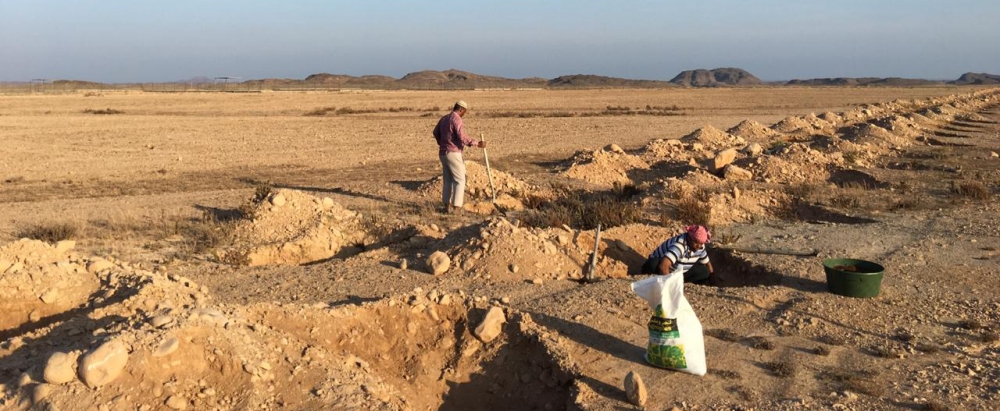About SERC
SERC stands for Social & Environmental Reforestation Collaboration
Planting Trees
A large portion of the Dhofar Forest has disappeared due to overgrazing and climate change. We can stop this development by planting new trees and protecting them, enabling all living species to live and strive in harmony.
Community Engagement
One of the main pillars of the SERC project is community engagement and participation. It is all about working together along with nature and with people. Therefore, a lot of the activities undertaken during the project is about awareness creation as well as learning about trees – their role in the ecosystem; as carbon balancers, as drivers for fertile and healthy soil, as providers of shade and humidity and their link to the unique fog-harvesting eco-system of Dhofar. These activities include school visits, workshops for private and public entities as well as mere outings in the field engaging volunteers in trial plantations.
Water-Saving Reforestation Piloted in Dhofar
A. Background
Oman is a historically fertile country with Wadi’s and the remains of past forest witnessing of the riches that once existed and sustained a largely rural population. The local practices to manage scarce water resources in a highly efficient and socially equitable manner, under the name of Iflag, are world famous. However, most of the green lands disappeared over the years. Water tables have sunk and local lands are losing their ability to sustain agriculture, rural incomes, and jobs.
The last region to retain its natural beauty and associated richness is Dhofar, which benefits from the Khareef, a weather phenomenon with sustains a seasonal lush fog-forest. The summer mist and this forest are intervowen as a single ecosystem that brings huge value to locals from traditional food and local practices, as well as from modern tourism. However, over the past 45 years, some 75 percent of the previously forested area has disappeared (Hildebrant, 2007). Past efforts to halt this damaging trend were unsuccessful. Yet, unless effective countermeasures are worked out, the Khareef will weaken and disappear, and Dhofar be turned to barren, dead lands unable to support people or animals outside the urban area.
Separately, however, experience from around the world has demonstrated that green areas can be recovered through innovative plantation of trees through methods that do not consume water, i.e. do not use drip irrigation, but which economize water and help restore the strength of the soil (Hoff, 2013). Early practices and in Oman were unsuccessful, and it was thought that the dry, hot season was too demanding. Recent experience has proven differently, however, given the adoption of a comprehensive solution, planting with native trees, complementing the soil with natural fertilisers, and training locals for effective plantation and monitoring, trees can be planted, survive, bring the water back and lay the basis for restoration of long-gone eco-systems. The result will be the revival of local land value, employment and income opportunities for rural populations. As the soil thickens and regains natural microbic life, erosion stops, sand storms cease, and the ocean regains health as the highly damaging impact of sand blown into the seas is held up.
Against this backdrop, starting in the Spring 2019, SERC project, with support of BP and making use of land provided by MECA under its administration in Dhofar, has initiated plantations in four areas in Dhofar. The scheme focuses on planting young native trees, saplings, in dry areas. It experiments with a combination of water-saving innovative technologies, without dependency on drip-irrigation, soil improvement, natural fertilizers, and bio-stimulants, accounting for a coherent Nature-Based-Solution (NBS) which allows trees to get rooted naturally, display health long-term growth and restore biomass, vivid ecosystems and fertile conditions for local food-production, in dry lands currently plagued by erosion and in a vicious circle where they lose the prospective of supporting any productive activities for the foreseeable future.
As for the results to-date, 6 months after the initial plantations, the documented survival rate of trees planted are above 90 percent, based on just 40 liters of water allocated to each sapling, and on average just one add-on injection, or 20 more litres of water, for each sapling.
Close to 10 000 native Omani trees have been planted in the SERC project and associated activities, since the start in 2018. Most of these plantations have been in Dhofar. Some of the sites have been highly challenging, such as Mirbat, whereto the Khareef does not reach, meaning that the planted trees need to survive the hot season without benefit from the humidity provided by that weather phenomenon. While the trees have grown somewhat less rapidly than in the other sites, their root systems have been naturally established resulting in high survival rates, in the range of 70 – 75 percent about 7 years after the plantations started. Moreover, the trees are now growing independently without need of human support by way of irrigation, fertilisers or protection against insects. This is due to the natural strength of Oman’s native species, which are specialised in economising water for survival in dry climate, and extremely heat resistant.
The team behind the SERC project and Qualies other plantations continue to expand our activities for the long term. Our ambitious is to scale the solutions at hand, to cover and bring life back to much larger areas of Oman and the Middle East, in restoration of living ecosystems developed in harmony with local populations. Some of our most expansive activities since 2022 onward have been in the form of plantation activities carried out in public Omani schools. A number of Omani regions as well as the Ministry of Education have strongly welcomed these schemes, which are based on a holistic approach inspiring and engaging school children in interactive learning processes and co-creation of green areas in their school years, while also connecting with teachers, school administration, parents, and wider communities in diffusing a mindset devoted to reconnecting with nature.
Starting in the fall of 2025 and spanning the years ahead, we engage with sponsors for expansion of the plantations carried out in SERC thus far, while also engaging with a list of about 50 identified Omani schools that have displayed strong interest in the Green Education programme. We believe that our plantations using water saving technology in important hold important lessons for the wider region, and also for southern Europe, where artificial plantations are increasingly affected by climate change, flooding and fires. The stark challenges associated with disturbed water cycles and loss of vegetation and biodiversity in many other parts of the world as well, can similarly benefit from the practical experience and operational lessons learnt. For a summary, see; SERC WHITEPAPER, under FEATURES. These possibilities are presently explored through Qualies international partner networks.
B. Species Planted
The prioritized species are all native to the Dhofar region, include: Boswellia Sacra, Ziziphus Spina Christi, Acacia Tortilis, Acacia Senegalensis, Acacia Geraldii, Acacia nilotica and Tamarindus indica.
C. Zones of relevance to tree planing in Dhofar
Two main ecological zones have been identified as priorities for Waterboxx usage in Dhofar. These are (as also numbered in the Figure xx below):
4 - the Dry Plateau, where monsoon moisture levels decrease with distance from the wet escarpment; and
5 - the North-facing Cliffs and wadis, which receive little surface moisture during the monsoon.
NB Plant species, as stated already, must crucially be differentiated according to their preferred ecological zones.

References:
Hildebrant, A., Al Aufi, M., Amerjeed, M. Shammas, M. and Eltahir, E. A. B. (2007), “Ecohydrology of a Seasonal Cloud Forest in Dhofar”, Water Resources Research (43), 1-13.
Hoff, P. (2013), The Treesolution, Hopeland Foundation, available through Amazon.
Miller and Morris (1988), Plants of Dhofar, The Office of the Adviser for Conservation of the Environment, Diwan of Royal Court, Muscat.
Shammas, M. I. (2007), Sustainable Management of the Salalah Coastal Aquifer in Oman Using an Integrated Approach, Doctorate Thesis, Royal Institute of Technology (KTH), Stockholm.
Thaler, R.H. and Sunstein, C.R. (2008). Nudge, Improving Decsions about Health, Wealth, and Happiness, Yale University Press, New Haven.
CONTACT US
Beach Commercial Complex BCC
Office:308, Quram, Sultanate of Oman
web design oman © 2021 sercproject



